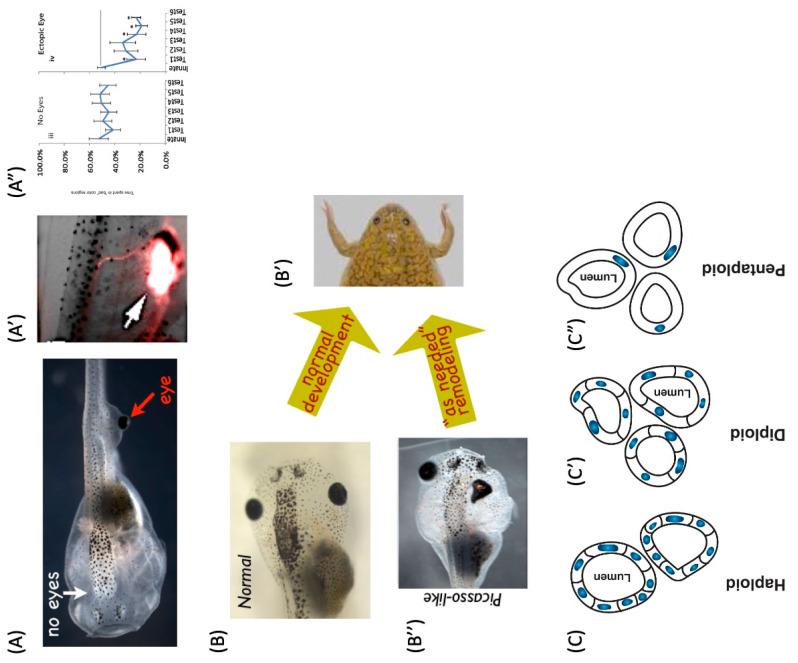Figure 5.
Morphogenesis plays the hand it is dealt. The essence of biological morphogenesis is that it does not assume much about current circumstances and attempts to create a viable organism with whatever is at hand [159]. Thus, frog embryos in which eye primordia cells are moved from the head to the tail still make good eyes (A), try to connect to the spinal cord (A’, red stain), and enable the organism to exhibit behavioral vision (A”), despite a completely novel visual system–brain architecture which had no evolutionary prep time to get used to the new arrangement—nothing needed to be changed (at the DNA level) to make this new configuration workable. Similarly, tadpoles (B) which must rearrange their face to turn into a frog (B’) can still do so even if everything is artificially placed in a scrambled configuration (B”), because each organ is able to move as needed to get its job done (reach a specific region of morphospace). Finally, the cross-level nature of this overloading of basic mechanisms is seen in newt kidney tubules schematized here in cross-section. While they normally consist of 8–10 cells that communicate to make a tubule (C), the cells can be made experimentally very large—in that case, fewer cells will work together to make the same size tubule (C’). In the case of enormous cells, a completely different mechanism (cytoskeletal bending) will be used by a single cell to create a lumen (C”)—showing how the same machine (genome and cell) can enable high-level anatomical goals to trigger diverse low-level molecular mechanisms, as needed for a global goal (such as reaching a specific region of anatomical morphospace). Panels (A,A’,A”,B) courtesy of Douglas Blackiston, used with permission after [230]. Panel (B’) courtesy of Erin Switzer, (B”) taken with permission from [231]. Panels (C,C’,C”) by Jeremy Guay of Peregrine Creative. * p < 0.05 (A”).

